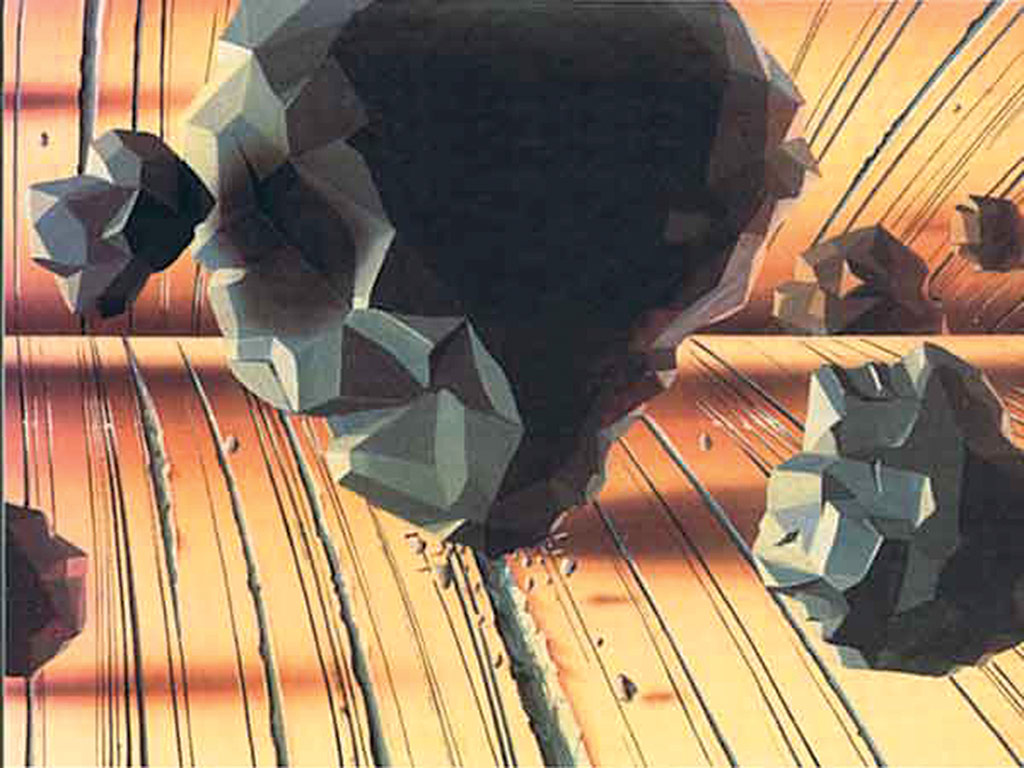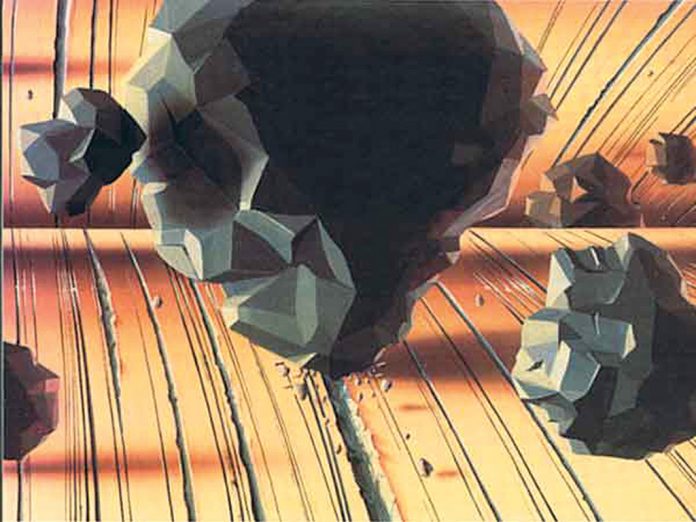By Dan Watson
The advanced exhaust system, including diesel particulate filters, urea injection systems, exhaust gas recirculation and catalytic converters is certainly a step forward in the reduction of emissions into our environment. These controls, however, come at a cost. In a future article, I will explain the how these advanced exhaust systems work. In this article, I want to take a look at what recycled soot does to the engine oil in the diesel engine and recommend bypass oil filtration as a worthwhile protection for this considerable investment.
Oil bypass filters for large diesel engines are accepted as a necessity and have been recommended by several aftermarket filter companies for many years. As a certified lubrication specialist, I have recommended bypass filtration systems as a solution for many diesel applications, though not for every application. Prior to the advent of exhaust gas recirculation (EGR), diesel engines were capable of dealing with soot. Even if they could benefit from a bypass system, they could certainly get by without one. Not so with the new advanced exhaust systems and EGR. I absolutely recommend bypass filtration for these engines.
What Is Bypass Filtration?
Bypass filtration refers to systems in which a portion of the oil pump output, usually no more than ten percent, is diverted to an auxiliary filter. The system is so-named because in a conventional bypass system, the oil bypasses the engine and returns to the oil pan without providing lubrication to the engine. In fact, some reference manuals refer to such systems as parasitic filtration systems. It is important to note that while the appellation is not totally without merit, bypass systems do not divert enough oil from the engine to fall below manufacturer’s specifications. There is also a second type of bypass system in which none of the oil is diverted from its flow through the engine – more on that later.

Courtsey of Amsoil Inc.
A typical single remote (parasitic) bypass filtration system diverts a fraction of the oil in order to remove smaller particles that the full flow filter misses.
The need for a bypass filtration system arises when the filtration provided by the stock, full flow oil filter is insufficient to remove enough of the oil’s contaminants. Because the standard filter must allow sufficient oil flow to the engine to keep it properly lubricated, the filter media inside are, by design, thin enough to allow the oil to flow relatively easily. Of course, it would be no good to make the standard filter media more dense – so that it could handle smaller particles – if this meant that the oil was hindered from getting to the engine. Nobody wants a molten mass of metal under the hood, no matter how clean it might be. This means that standard oil filters, even good ones, cannot deal with particles in the oil that are smaller than about 15 microns. A bypass filtration system, on the other hand – by only filtering approximately ten percent of the oil at a time and leaving the other 90 percent to do the lubrication work – complements the standard full flow oil filter and allows the overall lubrication system to both provide sufficient lubrication and filter smaller particles down to the three-micron range. Even though the bypass system only deals with a fraction of the oil on any given pass through the system, over time, the complete volume of oil is treated by the finer media in the oil bypass filters.
Soot
Soot is a byproduct of the combustion process that begins as particles that are sub-micron in size. At that size, they pose no threat to the engine and if they remained that size, there would be no need (and it would be very difficult) to filter them. Unfortunately, soot particles are attracted to one another and join together to form particles that are big enough to cause damage but small enough to evade capture by the full flow filter. Soot is more readily produced in diesel engines than gasoline engines.
Today’s turbo-charged, computer controlled, fuel injected engines are extremely good at mixing air and fuel for clean burning engines. Earlier turbo-charged diesel engines were as good, if not better, at burning cleanly; unfortunately, the requirements to lower emissions resulted in exhaust gas recirculation (EGR). Recirculation of exhaust brings up to 35% of soot back into the engine for re-burning. The soot levels for these engines are significantly higher than the preceding engines and the soot inevitably finds its way into the oil through the piston rings. High soot levels increase the viscosity of the oil and interfere with proper oil flow. When soot levels are high, soot begins to drop out of solution and can clog critical oil galleries and starve components of vital lubrication. The requirement to recirculate exhaust gases is one of the bases of the CJ-4 classification for diesel oils. CJ-4 rated diesel oils are designed to carry higher levels of soot and to resist soot dropping out of solution.

Soot and other particles as small as five microns are responsible for the majority of abrasive wear in an engine. A good bypass oil filtration system will effectively remove particles to the three micron, and sometimes smaller, range.
Using CJ-4 oil in combination with the highest quality full flow filters will help keep soot in check to a point. However, the only way to ultimately remove the soot that remains unfiltered in a system is to drain the oil. This reality shortens the lifespan of oil and requires a higher frequency of oil changes than might otherwise be necessary, especially for extended drain synthetics. In the future, I believe that improvements in diesel oils and better full flow filters will allow for extended drain periods using the standard oil filter system. Using the technology available today, I recommend using a high quality synthetic CJ-4 diesel oil complemented by an oil bypass filters system that is capable of filtering out a portion of the soot. Excellent bypass systems remove 30 to 40 percent of the soot. Even at this level of efficiency, soot levels are manageable. Full flow filters by themselves essentially remove no soot from the system.
Variations of Oil Bypass Filters
Most bypass filtration systems leave the standard full flow filter in place and add a remotely-located bypass filter. These systems are the ones sometimes referred to as parasitic because they divert some of the oil away from the main oil flow responsible for the lubrication of the engine’s components. The amount of oil diverted is controlled by an orifice or similar restrictor to make sure that enough oil is reaching the engine. An alternate design, patented by Amsoil, locates both the full flow and bypass filter remotely.
The Amsoil dual remote filtration system eliminates the parasitic loss of oil flow to the engine.
This dual remote oil filtration system eliminates the parasitic characteristic of a typical bypass unit by routing all the oil, whether it travels through the full flow filter or through the oil bypass filter, to the engine components after filtration has occurred. As with the single remote bypass filter system, only a fraction of the oil travels through the bypass filter on a given pass.
Regardless of the design or manufacturer, the bypass system is a good investment on any diesel engine. For the modern diesel engine, with EGR, the bypass is a necessity. Soot is a concern in all diesel engines but with the EGR system, soot levels can become destructive. A potential benefit of installing a bypass filtration system is extended oil change intervals. When using properly formulated synthetic diesel oil and a high quality bypass filtration system, it is possible to avoid the impact of higher soot levels and extend oil drain intervals significantly. If you own a turbo diesel with EGR, you are simply protecting your investment by installing a good bypass oil filtration system.
www.thelubepage.com
(407) 657-5969






